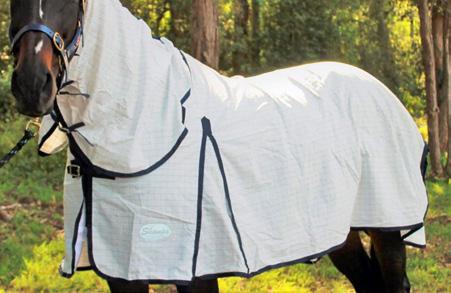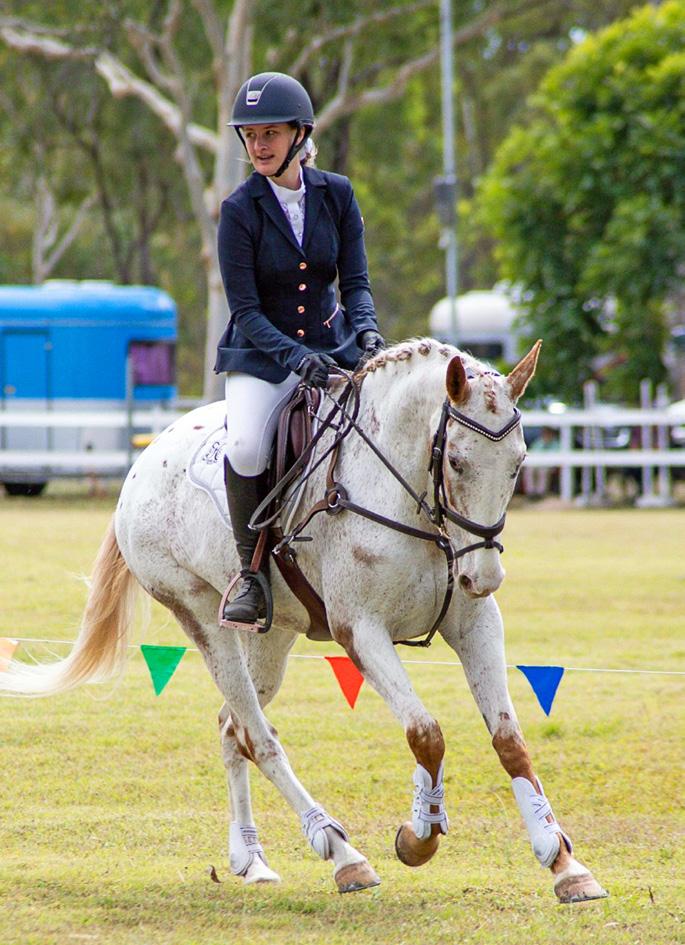
9 minute read
Equipment: To rug or not to rug?
AROUND THE TRAPS
Abby Wilmot onboard Equineternal Chicago during the Black River Pony Club NQEG Showjumping Championships (Image by Ellen Gillman Photography).
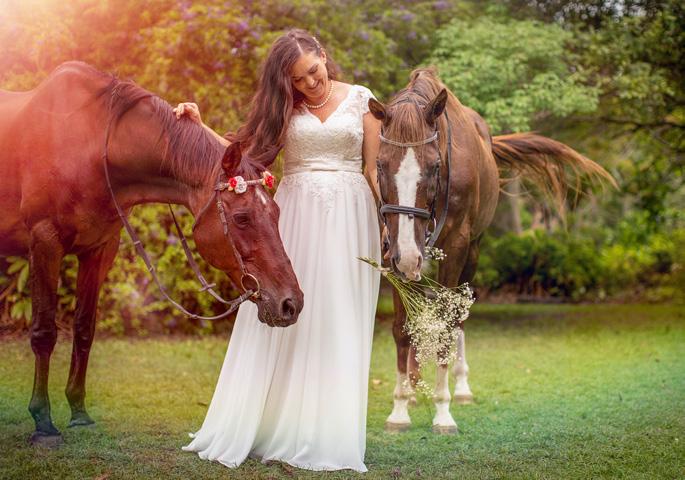
ABOVE: When Emma and Benjamin got married, Sherlock and Ralph were invited. It was a beautiful day, and Ralph particularly enjoyed Emma’s bouquet! (Image by Fotoco Australia). RIGHT: Holly Thurgood and CL Spinnin Up Dust at the 2020 Victorian Reining Horse Association State Show at Werribee Park Equestrian Centre (Image by Ken Anderson Equine Photography). BELOW: Megan Warwick and Khan Touch This enjoying a Sydney Hit Out event at the Sydney International Equestrian Centre (Image by Snapshot Australia).

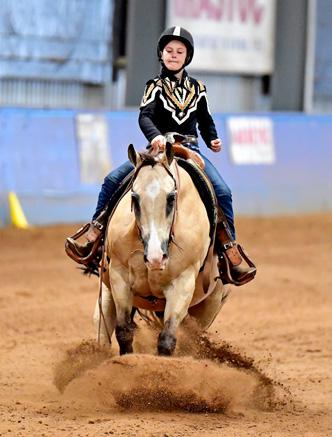
EQUIPMENT
To rug or not to rug?
That’s a really good question with no one-size-fitsall answer. AMANDA MAC looks at the whys and wherefores of rugging: when to, when not to, and which rug to choose if you’re going to.
It’s easy to assume that all horses benefit from rugging. It’s also easy to assume that if it’s cold outside, thicker must be better. But that's not necessarily the case. After all, horses have survived surprisingly well for thousands of year without the need of a blankie!
That’s not to say that you should never rug your horse, far from it, but you should take into consideration how a horse controls its own body temperature, how they’re kept (paddock or stable, clipped or not), as well as the effect a rug might have on their overall comfort and well-being.
Thermoregulation – it’s a thing
Assuming your horse hasn’t been clipped out and isn’t stabled, their ability to thermoregulate (regulate their own body temperature) is quite amazing. Because the coat and skin are excellent insulators and the horse’s muscle movements generate heat, it’s actually easier for them to warm up in cold weather than it is to cool down during a hot spell, or after a workout.
You may think your horse grows a winter coat and then sheds it as summer approaches because of temperature changes. But it’s actually down to a process called photoperiodism, in which sensors in the skin react to daylight. As the days shorten, the sensors trigger the growth of the coat, and as daylight hours increase, they prompt shedding. Then there’s piloerection, the insulating mechanism that causes each individual hair to be raised, lowered, or turned in order to either increase or decrease the thickness, and therefore the warmth, of the coat. The hairs are moved by erector muscles, which like any other muscle in the body require regular exercise in order to work properly – exercise that’s unlikely to occur under a rug.
Without going any deeper into the metabolic and other processes involved in thermoregulation (that’s a subject for a whole other article), you probably now have an idea as to why rugging your horse unnecessarily, or indeed overrugging them might potentially interfere with their innate ability to heat their own bodies.
For instance, a rugged horse will try and warm up the exposed areas of their body, but because they can’t increase the heat to those parts specifically, their whole body warms causing them to sweat under their rug, which is more of a problem metabolically than many owners realise.
Reasons to rug
There are however, some situations in which rugging your horse is advantageous: Showing: The woolly mammoth look isn’t a winner in the show ring, or at any other event! Lightly rug your horse from early autumn and throughout winter to prevent a thick winter coat. But you will need to keep a very careful eye on them to ensure a change in the weather hasn’t made them uncomfortably hot under their rug.
The young, old and unwell: Horses that are not yet fully mature (including foals), older horses, and those that are unwell may be more prone to feeling the cold, and will often require rugging during the colder months.
Climate change: You’ve just moved to a colder climate and it’s winter. Your horse is very likely to need time to adjust. So if they’re shivering or standing with their tails tucked down they’ll probably benefit from a rug to help them acclimatise.
Particularly bad weather: A horse’s winter coat will usually keep them warm, even in very cold conditions. However, if the weather is particularly bad with low temperatures, heavy rain and strong winds, you may need to rug your horse. In this instance, be sure to use a rug with adequate insulation.
Which rug to use?
So although it’s not a good idea to rush out and smother your pony in rugs the moment you start to shiver, rugs certainly do have their place – and there’s quite a variety to choose from. Firstly though, here are some general points:
1. Always buy the best you can afford. A good quality rug is likely to last longer, have heavier duty stitching, and sturdier leg straps and fastenings. 2. Ensure that the rug actually fits your horse – if in doubt you’ll find any number of online guides to help you get it right. 3. Some rugs are made from natural materials such as cotton, others are
Bucas Buzz-Off Zebra Rug and Mask (Image courtesy Ashbree Saddlery).
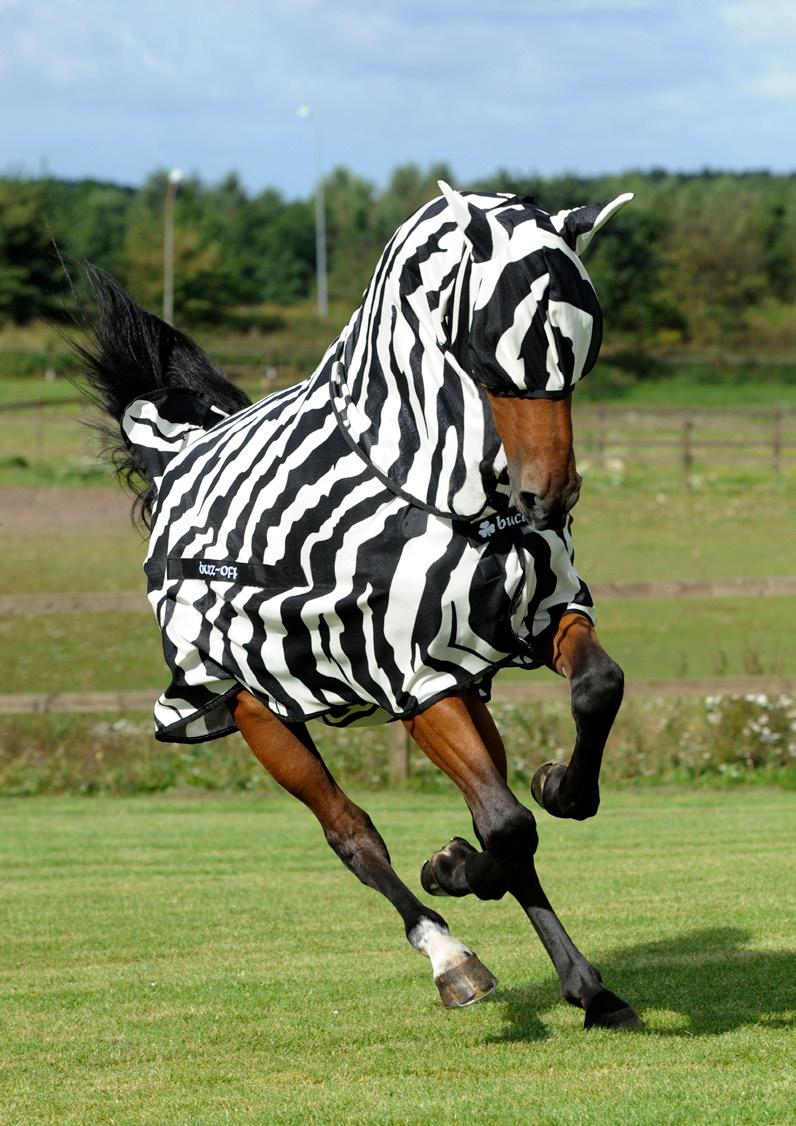
manufactured using synthetic fabrics that come in deniers ranging from 600 to 1800 plus (a denier is the measurement of the strength and density of the outer material). 4. Fill: There are different levels of fill offering varying levels of thickness and warmth. Sheets, for example, have no fill, while rugs can have from 180 up to 300 grams of fill. However, the more fill a rug has, the more mindful you must be that your horse doesn’t overheat. 5. Many rugs are lined with satin or a synthetic fabric, while others might be lined in polar fleece or a similar material. While fleece adds warmth to the rug, it requires more cleaning and maintenance to remove hair and dust.
Rug Types
With a mind-boggling variety of colours, trims, types and accessories on offer, you should be very clear as to the reasons you’re buying a rug or sheet before you venture out to your local saddlery. It’s all too easy to be tempted by all that horsey haute couture only to leave the store considerably lighter on cash and with a rug or three that perhaps you didn’t actually need!
Stable Rugs: If your horse is clipped and stabled, a stable rug will compensate for their loss of coat, and their inability to move around freely to generate body heat. Some stable rugs have memory foam sewn into the wither that contours to the horse’s shape and helps reduce chaffing, other have a standard neck design, or combine a neck rug that can be folded back if required.
Coolers: As the name suggests, a cooler rug is designed to be used after exercise so that the horse’s body temperature doesn’t drop too rapidly while they’re cooling down. Look for a rug that features stay-dry wicking and incorporates mesh to allow air to circulate freely. However, probably the only time a cooler is necessary is after a horse has worked up a sweat in very cold weather and might therefore be at risk of a chill when they stop work.
Turn-Out Rugs: These rugs vary in the levels of warmth and protection they provide and are designed to protect your horse from harsh weather variables such as snow, rain and strong winds. Your horse’s living conditions, clipping routine, age, weight and exercise level should all be considered before choosing a turn-out rug
Summer Sheets: Summer sheets usually have a high cotton content and therefore ‘breathe’ more naturally, helping to keep your horse cool when they’re turned out in the sun. They also offer UV protection and reduce the likelihood of the coat fading, as well as keeping it relatively free of dust.
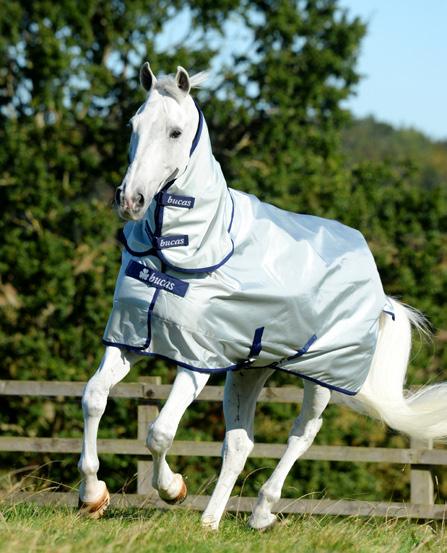
Bucas Power Turnout and Combi Neck (Image courtesy Ashbree Saddlery).
dress sheets, these are usually made from anti-microbial, moisture wicking cotton drill. They are designed to be used at shows when you want to keep your horse clean and shiny. They can also be useful for cooling your horse down after you’ve ridden if the weather is chilly.
Mesh Rugs: If you want to help protect your horse from the irritation of summer flies and gnats, mesh rugs are a great choice. For added protection, these rugs are available with tail flaps and a satin lining in the shoulder and mane area to prevent rubbing.
Quarter Sheets: Usually made from moisture wicking polar fleece, the quarter sheet is perfect when you’re warming your horse up at competitions, or when you’re exercising your horse
in cold weather. Designed to be worn under the saddle, the sheet runs from wither to tail and drops down to cover approximately three quarters of the horse’s body.
Rain Protectors: These keep both your horse and saddle dry. Essentially a lightweight, breathable sheet made from waterproof fabric, they’re perfect for those rainy competition days.
Winter Rugs: From synthetic winter rugs with the added warmth of polyfill, to unlined canvas rugs, there’s a winter rug to suit most conditions. Choose a rug appropriate to your climate so you don’t run the risk of overheating your horse.
However, a problem arises if you can’t be there to take your horse’s rug off or put it on as temperatures fluctuate over the course of the day. But there is an answer. A technologically advanced rug is now available that offers a staydry lining coupled with a special heat reflective aluminium coating and silver outer that actually helps to regulate your horse’s temperature across a wide range of weather conditions.
Talking of technology, researchers noticed that zebras weren’t pestered by flies in the same way as horses. Why? It’s down to the zebra’s stripes, which apparently flies find confusing! One clever company made use of these findings with a range of zebra print horse rugs and accessories. So, if you notice a pony out in a paddock with a zebra print rug, it’s not for fun, it’s for the flies.
A final thought
Chosen wisely and properly fitted, rugs and sheets are more of a plus than a problem! They can protect your horse from the vagaries of the weather and help to keep them healthy, comfortable and happy. If you are still unsure whether your horse needs a rug, and if they do, what type would be best, ask for advice from someone whose opinion you trust.
Kentucky Show Rug (Image courtesy Trailrace).
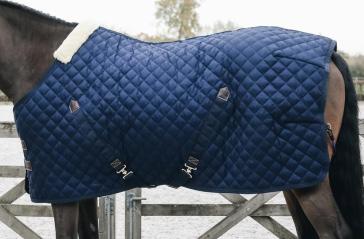
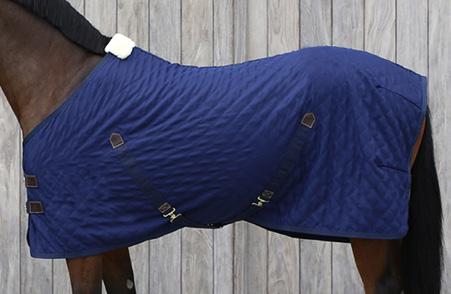
Kentucky Quick Dry Summer Sheet (Image courtesy Trailrace).
